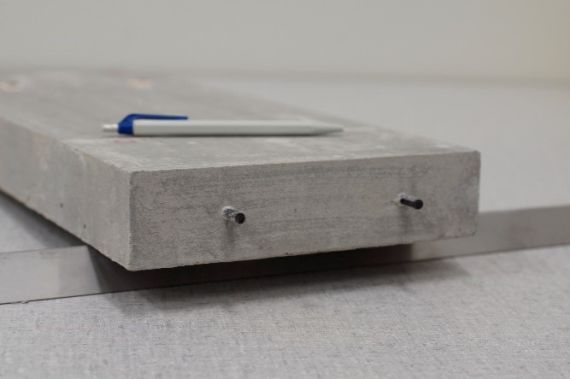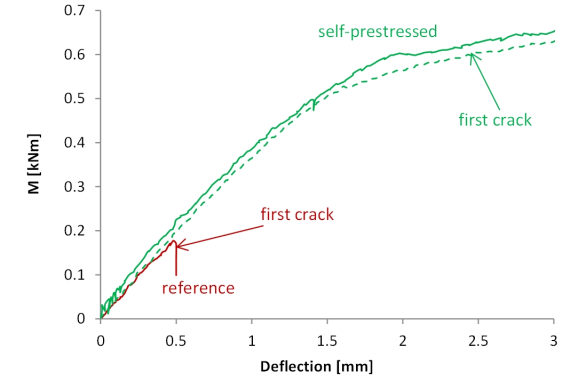Self-prestressed high-performance concrete

Conventionally prestressed concrete elements require tensile stress externally applied on the reinforcing tendons. These tendons exert compressive stress on concrete and hence offset the tensile stresses, increasing bearing capacity of concrete members. The widespread of the prestressing technology is usually limited due to a necessity of external prestressing bed and qualified work force. An alternative solution is the chemical prestress (self-prestress) – a process in which concrete expands upon hardening and hence extends the pretensioning tendons, becoming prestressed by itself, without any need of external prestressing systems, anchorages etc.
Reaching self-prestress comparable to that of external prestress has not been possible until recently due to a limited concrete expansion allowed in practice - exceeding this limit resulted in cracks or even disintegration of concrete elements. Further, in order to reach stable values of prestress on a long term, shrinkage of concrete must be significantly reduced.
High performance concrete developed recently at Empa can exert high pretensioning (>1000 MPa) on the tendons during hardening already from setting and reach very high levels of residual expansion also when exposed to drying. The residual (compressive) prestress can reach levels of ~5 MPa. At the same time, the concrete can maintain very good mechanical properties and durability. These characteristics are obtained by designing a specific combination of expansion-promoting cement (based on calcium sulfoaluminate, CSA and formation of crystalline hydration product - ettringite) and shrinkage reducing additives (superabsorbent polymers, SAP and shrinkage-reducing admixture, SRA). This innovative concrete is combined with the novel high-modulus (E1 > 450 GPa) CFRP tendons. The use of the corrosion-resistant CFRP tendons allows to reduce the thickness of the concrete cover and hence the dimensions and weight of the whole element. The possibility of eliminating the external prestressing and anchoring of the CFRP tendons represents a high impact, innovative improvement of the CFRP-prestress technology.
Simplified, much more cost- and labor-efficient prestressing technology opens new possibilities for mass production of the precast slender and filigree concrete elements for applications as façade elements in buildings, or non-structural concrete facilities, e.g. benches, fences, pavilions, electricity poles, etc. Self-prestressing allows also realizing elements prestressed in two directions (thin slabs). In future, we plan to extend the application to even curved prestressed elements, a technology that is not available with a conventional prestressing bed.
Project Period
2013 - 2021
Additional Information, first results
Empa Quarterly

Wyrzykowski, M., Terrasi, G., & Lura, P. (2018). Expansive high-performance concrete for chemical-prestress applications. Cement and Concrete Research, 107, 275-283
Wyrzykowski, M., Terrasi, G., & Lura, P. (2020). Chemical prestressing of high-performance concrete reinforced with CFRP tendons. Composite Structures, 239, 112031 (8 pp)
G. Terrasi, M. Wyrzykowski, P. Lura, Self-prestressed reinforced concrete elements, Application WO 2016/201587. European Patent (Nr 3310 738) and US Patent (US10604449B2), 2020
-
Share
